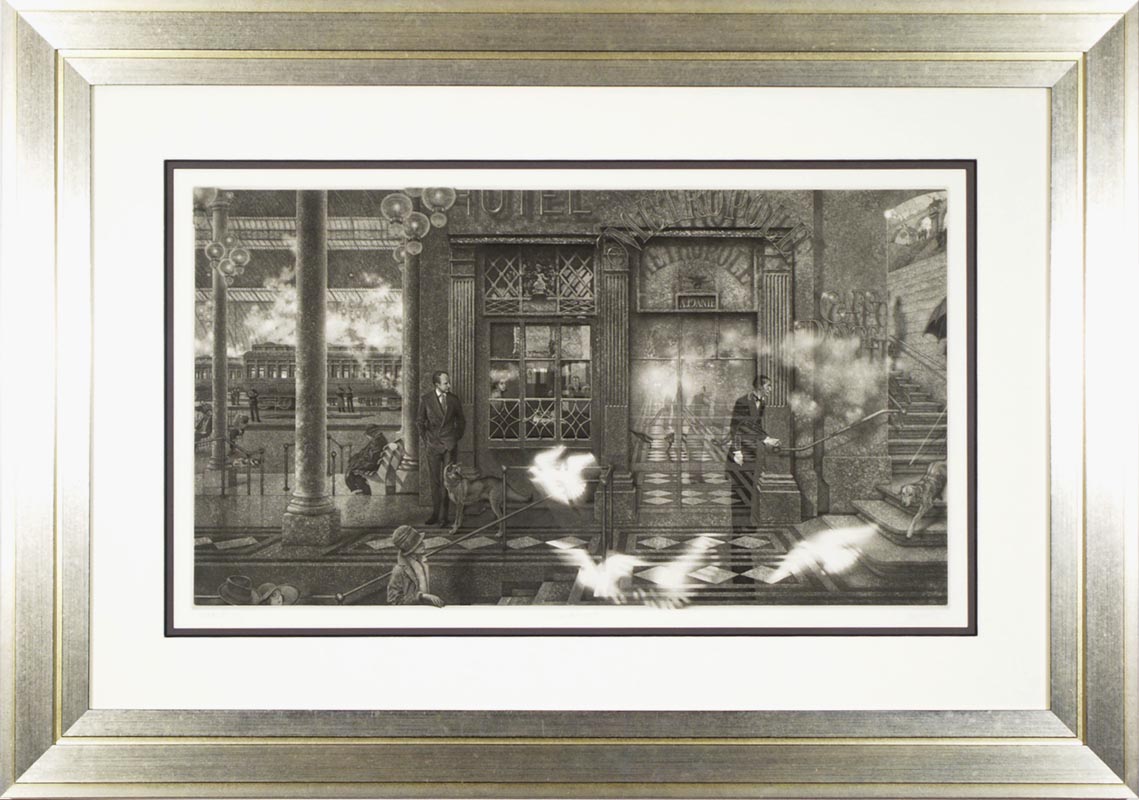|
|
 |
||||||||||||
|
Click On The Title To View A Larger Image |
||||||||||||
 |
||||||||||||
|
(1991) |
||||||||||||
|
"Interiors VII: The Train From Munich" 1991, etching and engraving; 508x913mm; 20" x 36", full margins. Signed, titled, dated and numbered in pencil, lower margin. A very good, dark impression [Milton 113]. Peter Milton (1930 -) was born in Philadelphia, the third of four children. He attended the Yale School of Art studying under Josef Albers. He earned both his BFA and MFA at Yale, after which he taught at the Maryland Institute in Baltimore. It was while at the Maryland Institute that Peter Milton turned his attention increasingly on print making and began his monochromatic journey to becoming one of the 20th century's greatest printmakers. Peter Milton's facility with printmaking techniques incur an overpowering visual and emotional impression on the viewer. It is the irreducible element arising from the subjective content of his images that demands the viewer interprets the meanings within his imagery. There is an intelligence and poeticism in his art that is ambiguous in time and place, and leaves the viewer with the impression of undefined familiarity. Time is halted, environments symbolic and images at once known and unknown drawn from historical times past, present and future force the observer to look beyond the subjective and discover a magical narrative. Peter Milton's art draws on American realism as well as Surrealism's evocative juxtapositions of objects, figures and elusive meanings. "The Train from Munich" is both specific and personal depicting Peter Milton's wife, Edith, escaping from Nazi Germany in 1939 and the impending darkness that was to prevail for the next six years. "The Train From Munich" contains many artistic and personal references. Including, at the right of Edith, sitting in the window at the age of twelve, stands Otto Frank, father of Anne Frank. The doorman is modeled after Marcel Duchamp, while the butler, the artist and the intellectual are symbols of a European culture that is about to be swept away by the juggernaut in the tunnel. Milton includes references to Cecil Beaton's Lady Diana Cooper in the lower left corner, Paul Klee as the farthest sleeping man and a Josef Koudelka gypsy above the sleeping dog. The man sleeping on the bench wearing a bowler hat is an homage to Magritte. The man next to the window holding a leashed dog is Raoul Wallenberg - the savior of thousands of Hungarian Jews who himself disappeared into Stalin's dark oppression. The figure derived from Wallenberg is the heart of the image. He has turned to see the commotion coming down the stairs, as has his dog. They can see what we cannot. The man in the window, next to Edith, is Alfried Krupp, the German munitions industrialist. This deeply symbolic imagery foreshadows the moments just before the horror mankind wrought upon itself, by choosing inaction and denial. [taken from Peter Milton's Notes on Interiors VII: The Train From Munich". "Interiors VII: The Train From Munich" is in a warm silver over black wash large stacked 37 1/2" x 53 3/8" frame. The outer Belgian linen hand-covered oyster, middle 8-ply ebony rag and dark gray rag inner rag mats are acid and lignin free and protected with Acrylite-AR OP3 (UV) by CYRO .......... $8,200.00 |